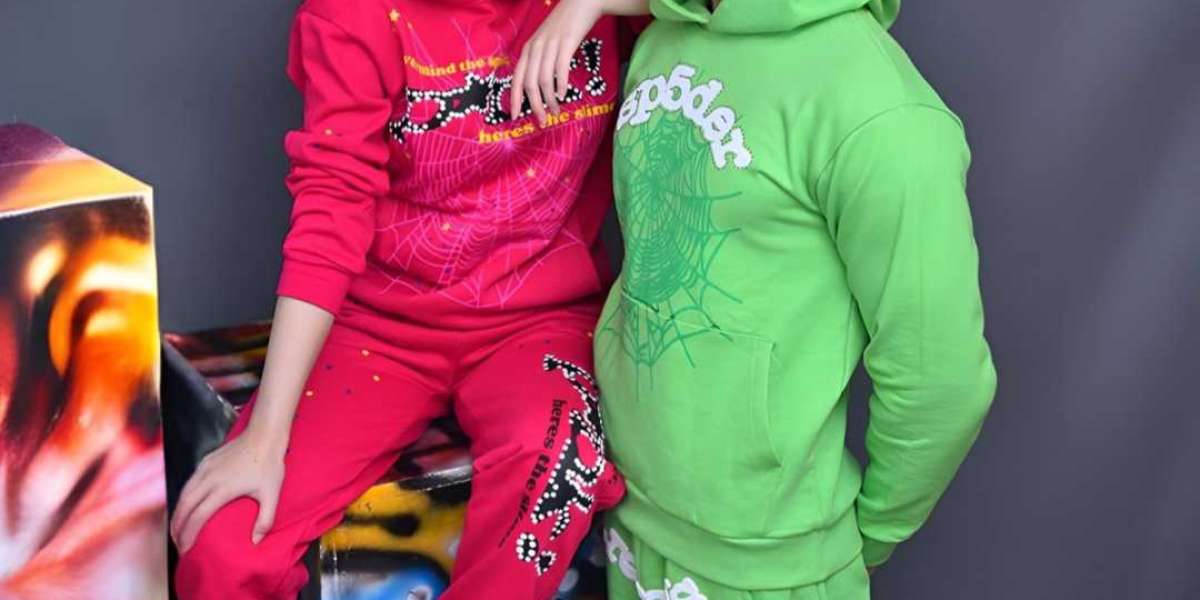In today's fast-paced world, social media and consumer advocacy play powerful roles in shaping the fashion industry. These influences drive brands to be more transparent, ethical, and inclusive, as consumers become more discerning and vocal. Let’s dive deep into how social media and consumer advocacy are reshaping the fashion landscape and the trends that are emerging from this dynamic relationship.
The Power of Social Media in Fashion
A Platform for Visibility and Connection
Social media platforms like Instagram, TikTok, and Pinterest have given fashion brands direct access to consumers. Visit now Spider hoodie These platforms allow for the sharing of content that showcases new designs, trend-setting influencers, and real-time consumer feedback. This instant connection has changed how brands communicate and how consumers engage with fashion.
Influencers: The New Trendsetters
Fashion influencers have a massive impact on consumer choices. By sharing outfits, styles, and product recommendations, influencers have become integral to brand marketing strategies. Micro-influencers, who have a smaller but dedicated following, are particularly effective for brands targeting niche audiences, as their recommendations feel more authentic and relatable.
The Rise of User-Generated Content (UGC)
User-generated content is an increasingly popular and effective way for brands to showcase real-life consumer experiences with their products. When customers share images and reviews, it not only builds trust but also provides brands with organic marketing that appeals to potential buyers.
Consumer Advocacy: A Force for Change
Demand for Ethical and Sustainable Practices
Consumers are more informed than ever and are demanding that brands act responsibly. With increasing awareness of environmental and labor issues, the modern consumer often evaluates brands based on their commitment to ethical and sustainable practices. This has led to a surge in sustainable fashion and the rise of brands that prioritize eco-friendly materials, fair labor practices, and minimal environmental impact.
Transparency and Accountability
Fashion brands are under scrutiny regarding their manufacturing processes, sourcing, and ethical commitments. Consumers want transparency, and brands that fail to provide it risk damaging their reputation. Brands that openly share their sourcing information, environmental impact, and labor practices are viewed more favorably by consumers.
Support for Inclusivity and Diversity
Modern consumers demand inclusivity and diversity in fashion, prompting brands to offer wider size ranges and represent diverse body types, ethnicities, and genders in their marketing. This trend toward inclusivity aligns with the values of many consumers and can lead to greater brand loyalty.
Key Trends Shaped by Social Media and Consumer Advocacy
Sustainable Fashion as a Standard
As consumers push for eco-conscious choices, brands are investing in sustainable materials like organic cotton, recycled polyester, and biodegradable fabrics. The use of sustainable packaging, carbon-neutral shipping, and transparent supply chains have become essential components of a brand’s image.
Digital Fashion and Virtual Try-Ons
The digital fashion space is growing, with virtual try-on technology allowing consumers to “try on” clothing without visiting a store. This innovation is particularly popular on social media platforms, enabling consumers to visualize products in their daily lives while reducing the carbon footprint associated with shipping and returns.
Rental and Resale Markets
With consumer advocacy favoring sustainability, rental and resale markets have become highly attractive. Fashion rental services like Rent the Runway and resale platforms such as Poshmark and Depop offer consumers a way to access high-quality fashion without contributing to waste, meeting the demands of conscious consumers.
The Slow Fashion Movement
Slow fashion emphasizes quality over quantity, encouraging consumers to buy fewer, better-quality items that last longer. As this movement gains traction, it represents a counter to fast fashion, challenging consumers to think critically about their purchases and their impact on the planet.
How Brands Can Adapt to Social Media and Consumer Advocacy Trends
Embrace Transparency and Authenticity
Brands that are open about their practices, from sourcing to production, are more likely to win consumer trust. Social media provides a platform to showcase this transparency, with behind-the-scenes videos, interviews with designers, and insights into materials and processes.
Engage with Consumers Directly
Engaging directly with consumers via social media platforms is essential. Responding to comments, participating in QAs, and featuring UGC all contribute to a brand's perceived accessibility and relatability. Active engagement also helps brands understand what their audience values.
Collaborate with Ethical Influencers
Brands that want to align with ethical practices should partner with ethical influencers who share their values. By collaborating with influencers who are vocal about sustainable and ethical fashion, brands can reach a more conscientious audience and foster long-term loyalty.
The Future of Fashion in a Socially Conscious World
With social media amplifying consumer voices and values, fashion brands face increasing pressure to uphold high standards. Check it now https://spiderofficial.us/ Transparency, sustainability, and inclusivity are no longer optional but expected. As the influence of social media and consumer advocacy grows, brands that adapt to these changes will likely be the leaders in a more ethical, sustainable, and consumer-focused fashion industry.













